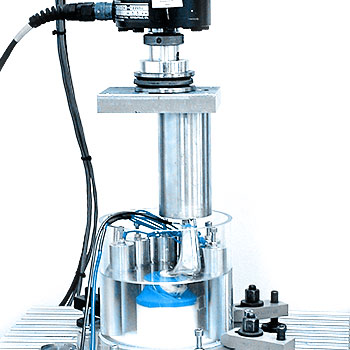ASTM F1875: Standard Practice for Fretting Corrosion Testing of Modular Implant Interfaces: Hip Femoral Head-Bore and Cone Taper Interface
Two methods are part of this standard, a quantitative analysis (method I; long-term evaluation) and a qualitative assessment (method IIb; short-term evaluation).
Method I is used to determine the fretting corrosion behavior in the long-term. The interface surface damage and generation of corrosion products are determined through optical evaluation (micro- and macroscopic, SEM/EDX) and particle and ion concentration analyses of the test solution after cyclic loading.
Method IIb is a short-term electrochemical evaluation (current measurement) to compare different designs and surface treatments. This requires extremely precise testing equipment and a well-shielded test environment.
This standard defines the testing, analytical, and characterization methods for evaluating the fretting corrosion performance at the bore and cone interface of the head-stem junction in modular hip implants under cyclic loading in a corrosive environment.


